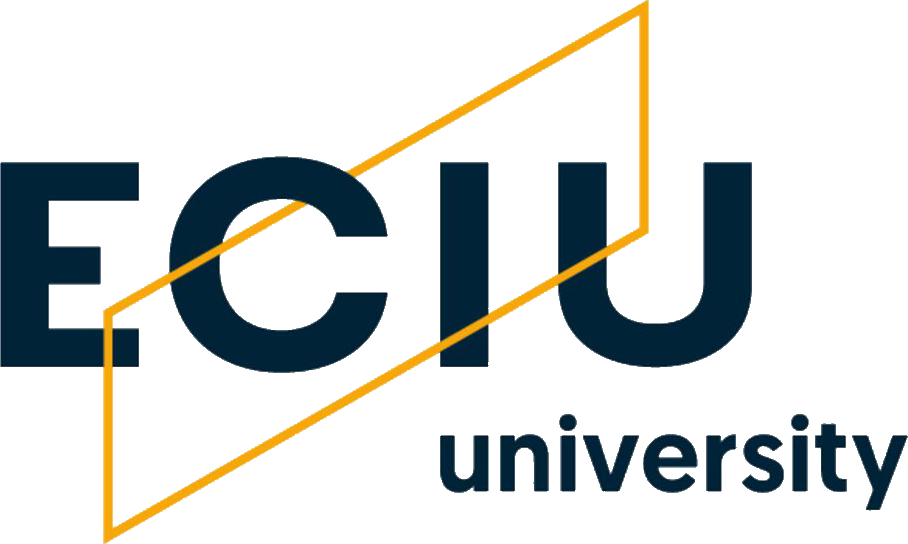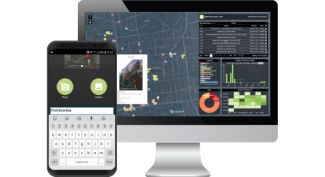In the mid-nineteenth century, factory owners from Lodz took steps to establish the Polytechnic Institute in Lodz. They donated land and buildings for this purpose. Unfortunately, the opposition of the tsarists authorities made it impossible to implement this initiative.
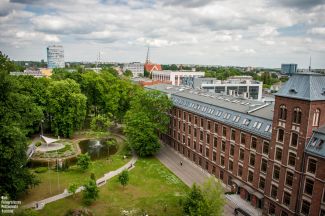
When one hundred years later Lodz University of Technology was established, it found its seat on the grounds of former factories, adapting industrial buildings, villas and residences to the needs of the university.
There are 14 historic buildings on the TUL campus, and the university authorities make sure that they are in the best condition and are a permanent element of the campus landscape, where modernity intertwines with the tradition of post-industrial Lodz.
Until recently, the Rector's office was located in Reinhold Richter's villa, the construction of which was completed in 1904. The villa was designed by Ignacy Stebelski and is a combination of various styles: Gothic, Mannerist and Art Nouveau. Inside the building there are many elements of antiquity and renaissance decor.
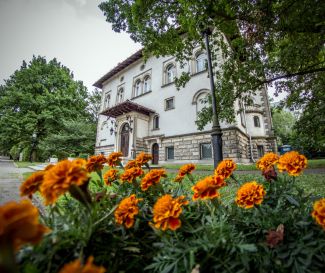
The 19th-century Villa of Józef Richter, currently the seat of Lodz University of Technology Rector's office Currently, the Rector of Lodz University of Technology resides in the villa of Józef Richter, which is connected with the neighbouring villa of Reinhold Richter by a park. The facade of the building is designed in a neo-Renaissance style and conceals an eclectic interior, distinguished by richly decorated rooms on the ground floor and a representative staircase.
The Dean's Office of the Faculty of Process and Environmental Engineering is located in the Neo-Renaissance villa of Oskar Schweikert, designed by E. Kreutzburg, which was built in 1888. The multi-storey block is single-storey with a single-storey entrance risalit to the front and a two-storey tower to the north-west. The building has window frames and rich interior design elements (stucco, panelling, facing ceramics), as well as elements of equipment (furniture) from the beginning of the second decade of the 20th century in the style of Art Nouveau and early modernism.
The Dean's Office of the Faculty of Technical Physics, Information Technology and Applied Mathematics is located in a residential building built in the second half of the 19th century, purchased in 1893 by Fryderyk Wilhelm Schweikert, who commissioned the extension of the floor there. This gave the small Neo-Renaissance residential building a front elevation with a prominent two-axis risalit rising into an additional lower storey.
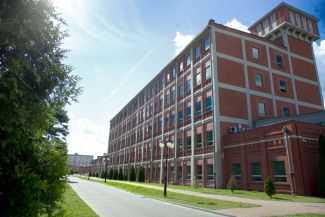
5-storey brick building of the Library of Lodz University of Technology.
The library of Lodz University of Technology is located in the former factory warehouse of the Fryderyk Wilhelm Schweikert Woolen Joint Stock Society. The building was built in 1910; after a few years, a characteristic tower with a water reservoir was added to it.
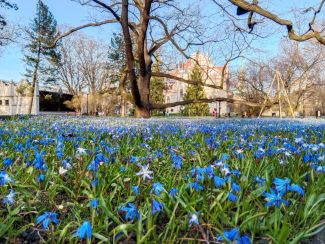
Lodz University of Technology is distinguished by its 35-hectare campus in the city centre. An important part of the university is the Park named after Bishop Michał Klepacz, who has been the property of TUL since 2017. The area of the park is 3.3 ha. It remains a generally accessible public space that can be used by the Lodz inhabitants. Numerous trees (also the Fabrykant Oak - Tree of the Year 2022), natural monuments and shrubs grow in the park, and Siberian squill flowers bloom in it in early spring.
Thanks to the obtained co-financing, the park carried out maintenance treatments for the tree stand, and care was taken to maintain the proper health and aesthetic condition of the trees. Care cuts and plantings were made, many new species of trees and shrubs appeared. These works had a positive impact on the natural values and aesthetics of the park, entered in the register of monuments.
ENERGY-EFFICIENT SOLUTIONS ON TUL CAMPUS
Lodz University of Technology is investing in modern, energy-efficient solutions. An example of this is the implementation of two projects at campus A:
PLAY GREEN, OR A NEW WOONERF ON THE MAP OF LODZ
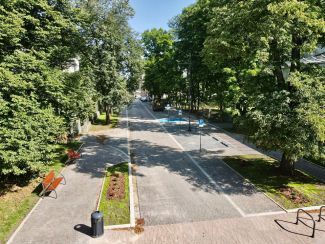
Thanks to the initiative of TUL students and employees who prepared two projects as part of the Lodz participatory budget, a new place has appeared on the map of the city, full of greenery and good energy. In this way, the two campuses of the university were connected by a beautiful walking route. A lane for cyclists and bicycle stands were created, and traffic restrictions for cars were applied. Green enclaves with benches and gastronomic gardens encourage the inhabitants of Lodz to visit this place.
Thanks to this initiative, the Stare Polesie estate was enriched with a friendly space full of greenery, and Stefanowskiego street has become a showcase of the district, just like the historic villas at Skorupki street and the beautiful Klepacz Park, which are part of the campus of Lodz University of Technology.
IDEA BOX
For over 5 years, the community of Lodz University of Technology has been able to have a real impact on the quality of the workplace and its surroundings through subsequent editions of IDEA BOX. And for good reason - after all, it is the students and staff at the TUL who are best placed to know what should be added or improved. Proposals for changes are often strictly related to the environment, especially since a significant part of the projects are pro-ecological.
Individual ideas include, for example, a flower meadow - a place for bees, butterflies and other insects. Meadows of this type bring many benefits, incl. because it is thanks to them that a better microclimate is created in urban areas. Flowery meadows also filter rainwater and air, and thus - they trap the dust that creates smog.
Another idea, implemented on campus B, are houses for hedgehogs - an endangered species that is under strict protection in Poland. The houses are not only to help them survive the winter, but also provide a year-round shelter.
You cannot miss the mini apiaries located in the Klepacz Park, as well as bicycle stands.
IDEA BOX is becoming more and more popular, as evidenced by the fact that every year the number of submitted ideas increases, and thanks to them, the university is becoming a more and more friendly place.
UNIVERSITY BIKES
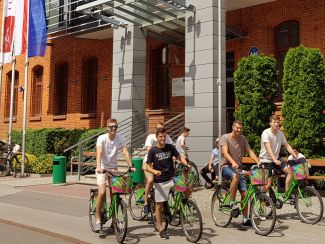
In 2010, the International Faculty of Engineering (IFE) met the needs of foreign students, wanting to facilitate their functioning and stay in Poland. For this purpose, IFE provided the ESN EYE student organization with bicycles purchased by TUL. The initiative addressed to exchange students makes it easier for them to travel to the university, explore the city, and at the same time lead and promote a healthy lifestyle.
Mobile Alert
The "Mobile Alert" application allows employees and students to submit information about incidents that take place on TUL premises.
This means that it covers an area of about 80 acres and nearly 20,000 people. This way, the university security services will be able to respond to incidents much faster. Please note, however, that "Mobile Alert" is not an application for reporting emergency incidents, where immediate intervention of, for example, fire department or police is required.
Categories of cases:
-
damaged plants;
-
damaged benches;
-
improper parking;
-
failure of the gateway system;
-
obstructions for the disabled;
-
Icing / not removed snow;
-
failure of lighting;
-
acts of vandalism;
-
rubbish/ debris;
-
graffiti;
-
other.
How can I report an incident?
Reporting an incident is extremely simple and consists of:
-
taking a photo;
-
selecting a reporting category;
-
optionally adding a comment;
-
sending the report.
The information goes to Chancellor's Services and is anonymous. Reports of submitted cases can be tracked on the university's WIKAMP platform.
Where can I download the application?
The app is extremely easy to use, it can be installed on both iOS and Android devices and it is available on the websit.
- Wdrożenie odnawialnych źródeł energii w budynku użyteczności publicznej Wydziału Budownictwa, Architektury i Inżynierii Środowiska Politechniki Łódzkiej w celu zmniejszenia emisji zanieczyszczeń do powietrza – instalacja fotowoltaiczna
Politechnika Łódzka realizuje zadanie: pn. „Wdrożenie odnawialnych źródeł energii w budynku użyteczności publicznej Wydziału Budownictwa, Architektury i Inżynierii Środowiska Politechniki Łódzkiej w celu zmniejszenia emisji zanieczyszczeń do powietrza – instalacja fotowoltaiczna”, dofinansowane ze środków Wojewódzkiego Funduszu Ochrony Środowiska i Gospodarki Wodnej w Łodzi.
Politechnika Łódzka w 24.10.2022 r. zawarła z Wojewódzkim Funduszem Ochrony Środowiska i Gospodarki Wodnej umowę nr 358/OA/D/2022 na realizację zadania pn. „Wdrożenie odnawialnych źródeł energii w budynku użyteczności publicznej Wydziału Budownictwa, Architektury i Inżynierii Środowiska Politechniki Łódzkiej w celu zmniejszenia emisji zanieczyszczeń do powietrza – instalacja fotowoltaiczna zmniejszenia emisji zanieczyszczeń do powietrza, poprzez montaż instalacji fotowoltaicznej”.
Zakres projektu obejmuje budowę nadachowej instalacji fotowoltaicznej na połaci dachowej Wydziału Budownictwa Architektury i Inżynierii Środowiska Politechniki Łódzkiej (Budynek B7) w postaci montażu modułów fotowoltaicznych w ilości zapewniającej pokrycie części rocznego zapotrzebowania na energię elektryczną budynku. Wykonanie zadania pozwoli na uniknięcie emisji zanieczyszczeń do atmosfery w postaci emisji pyłu, SO 2, NO x, CO, CO 2, oraz wytworzenie energii elektrycznej z instalacji fotowoltaicznej w ilości do 50 MWh/rok.
Inwestycja wpisuje się w Listę przedsięwzięć priorytetowych WFOŚiGW w Łodzi na 2022 rok, dla których Fundusz ogłosił programy priorytetowe: Ochrona Powietrza.
Fotowoltaika jest przyjazna środowisku, ponieważ nie tylko nie emituje dwutlenku węgla, ale też nie wytwarza odpadów. Działanie systemu jest ekologiczne, ponieważ nie wiąże się z powstawaniem zanieczyszczeń. Oznacza to, że decyzja o montażu paneli fotowoltaicznych to również decyzja o czystszej planecie.
Wpływ energii słonecznej na środowisko jest zdecydowanie korzystny. Fotowoltaika nie wytwarza i nie emituje żadnych szkodliwych substancji czy dźwięków. Dodatkowo zmniejsza zużycie energii konwencjonalnej, której produkcja powoduje zanieczyszczenie środowiska i postępujące zmiany klimatyczne. Instalacje PV to ekologiczne źródła energii, które nie tylko są odpowiedzią na aktualne potrzeby ochrony środowiska, ale i dają realne korzyści finansowe dla uczelni, jaką jest Politechnika Łódzka.
Projekt w żaden sposób nie spowoduje degradacji środowiska. Ponadto z rezultatów projektu korzystać będą zarówno kobiety jak i mężczyźni, projektowana infrastruktura posłuży wszystkim użytkownikom terenu uczelni
26.01.2024 r. zakończono realizację zadania inwestycyjnego pn. „Wdrożenie odnawialnych źródeł energii w budynku użyteczności publicznej Wydziału Budownictwa, Architektury i Inżynierii Środowiska Politechniki Łódzkiej w celu zmniejszenia emisji zanieczyszczeń do powietrza – instalacja fotowoltaiczna”.
Całkowita wartość zadania netto: 344 463,41 zł
Dofinansowanie w formie dotacji ze środków WFOŚiGW w Łodzi: 216 478,00 zł.
- "Likwidacja przedeptów powstałych na terenie Parku im. ks. bp. Michała Klepacza w Łodzi”
Politechnika Łódzka realizuje zadanie: „Likwidacja przedeptów powstałych na terenie Parku im. Ks. Bp. Michała Klepacza w Łodzi” dofinansowane ze środków Wojewódzkiego Funduszu Ochrony Środowiska i Gospodarki Wodnej w Łodzi.
Wartość zadania - 42 060,00zł
Dofinansowanie - kwota w formie dotacji 37 854,00zł
Nowe nasadzenia, likwidujące przedepty w miejscach do tego niewyznaczonych, wpłyną na utrzymanie pierwotnie planowanego charakteru parku, wpisanego do rejestru zabytków, poprawią jego walory przyrodnicze i estetyczne.
Likwidacja przedeptów powstałych na terenie Parku im. Ks. Bp. M Klepacza w Łodzi poprzez przygotowanie gruntu pod nasadzenia i wykonanie nasadzeń 960 krzewów.
Szczegóły na stronie Funduszu.
